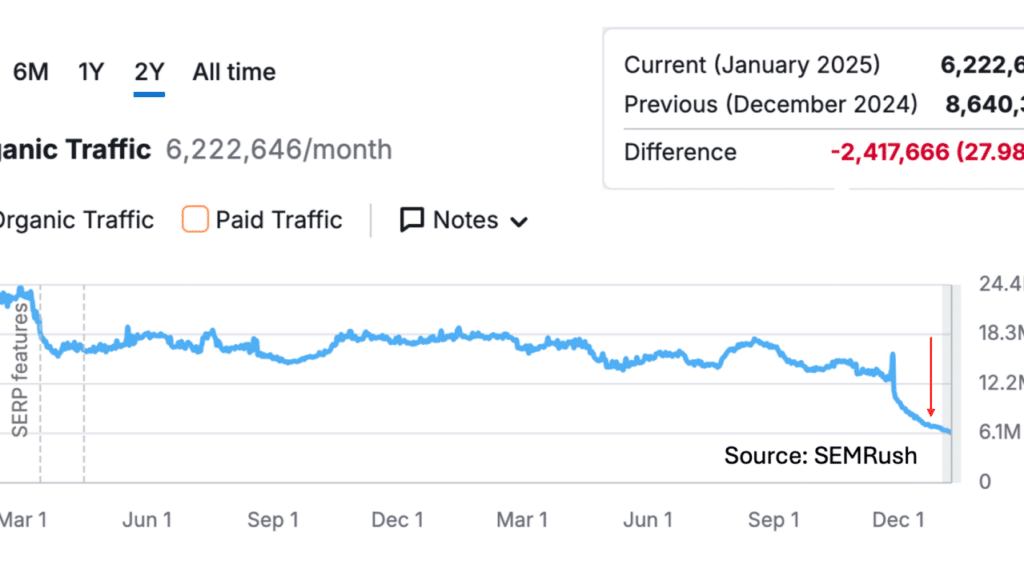How to Use SEO Long Tail Keywords

The internet irrevocably changed marketing. The strategies that work in the static environments of television or radio are no longer enough. To take advantage of this customer directed channel, you need to construct your web presence in such a way that it is likely to be found by potential customers. What that ultimately comes down to is your ranking in search engine algorithms for specific keywords and phrases.
SEO long tail is one of your main tools to organically impact this ranking. This is true for websites. This is particularly true for blogs or any content over 300 words.
SEO long tail is a technique whereby you repeatedly mimic, throughout the content of your webpage, the specific keyword phrases that your target market audience will likely use when searching Google* for what you have to offer.
Search engines rank your content’s relevance to a search, in part, based on these similarities. Thereby, SEO long tail optimises your visibility to the niche audiences that are actively searching for your products, services or content.
How to Use SEO Long Tail vs. SEO Short Tail
SEO long tail is differentiated from SEO short tail by the length and specificity of the keywords being used. Long tail phrases are generally over three words but are more importantly hyper-relevant and somewhat obscure. The utility of SEO long tail comes from the decreased competition for ranking and the increased likelihood that people using those hyper-relevant terms are your target market audience.
Most B2B SEO agencies mention SEO long tail as a powerful tool for anyone who owns a website or publishes material online. It is a necessary marketing strategy for any business offering niche products or services and looking to break into a competitive market. SEO long tail is about establishing clear lines of communication between your business and your potential customers.
- SEO long tail is your main tool to organically impact search engine rankings.
- SEO long tail is differentiated from SEO short tail by the length and specificity of the keyword phrases.
- SEO long tail is about optimising your website’s visibility for the unique phrases likely to be used by your target market audience.
- SEO long tail is a low-volume/high-relevance strategy that allows you to sidestep the fiercest competition and improve your lines of communication with your target market audience.
An Example of SEO Long Tail Keywords
Take this example: You are a company that sells clothes. Unless you are a giant retailer, you are unlikely to ever appear near the top of an organic search for ‘skirts’ or ‘women’s shoes’. These are SEO short tail keywords.
However, if you are a small boutique clothing store, you are likely to have a specialism. That specialism could be 1920’s inspired retro clothing. In that case, it is much more achievable to get on the first page of Google for long tail search phrases such as ‘contemporary flapper inspired skirts’, ‘clothing from the 1920s’, or ‘how to dress like a Bright Young Thing’.
To optimise the chances of this, you need to make sure that these phrases are reflected throughout your website. Don’t take the greater context for granted when writing your product names, category titles, or the about section of your company bio. Consider making landing pages for your website that primarily exist to contain long tail keywords.
The same logic holds true for any business. If you are a B2B IT vendor, simple phrases such as ‘computer storage solutions’ have you competing directly against PC World, Currys and Amazon. ‘Budget All-Flash Arrays for SAN configuration’ puts you in a much more competitive and specific landscape. If you install hardware and operate in London, for example, you can further refine your target market audience with a phrase like ‘All-Flash Array installation service London’.
How to Choose SEO Long Tail Keywords
Choosing the right long tail keywords comes down to putting yourself in the position of your customers. Think about how you would search for your product. Imagine you have various levels of expertise about your product — does that impact how you would search for it?
There are a number of tools that can provide metric-based data on the most common phrases used to search for different subjects. Google Trends is a free option. Paid services such as Yoast can help you identify useful keywords and evaluate your writing to make sure that it is optimised for effect.
However, you can gain a good perspective on the level of competition you will face for different keyword phrases through a simple Google search. Looking to see if the top results are actually related to your topic will also provide you with information on the validity of your phrase and its probable relevance to your target market audience.
See if you get the same results with different iterations of the same phrase. Think about question and statement based variations on the same idea. Try and make your phrase as broad as possible while still being unique enough that you have a chance at competing.
Make a list of phrases that you can come back to for future posts, blogs or expansions to your website. Categorising them based on intention will make it easier to grab one for a specific purpose. Make sure to occasionally revisit that list and check its relevance.
As you move forward, remember to track how different long tail phrases perform. You can learn a lot about keywords and your target market audience through experimentation.
- Put yourself in the mindset of your customer — think about the phrases you would use.
- Think of multiple iterations of the same idea.
- Trial search those phrases to see what pops up.
- See how these phrases rank in metric-based tools such as Google Trends.
- Consider paid services such as Yoast.
- Think about how realistic it is to compete for the first few pages of Google when it comes to those terms.
- Review your list of keywords as time goes on. Experimenting with SEO longtail strategies and cataloguing the results can enable you to improve keyword selection.
The Details of How to Use SEO Long Tail Keywords
Readability
Although the use of keywords is important, never allow yourself to lose sight of readability. It is better to have fewer usages of your keyword phrase than for your website or blog to read like marketing material. Good content will be more likely to get links, shares and comments — all of which are also important to rankings.
The trick is to keep your keywords at a density where they don’t stand out unless you know what you are looking for.
Titles
For SEO experts in the UK, titles are the most vital area to consider when executing an SEO long tail or SEO short tail strategy. Text tagged as H1 or H2 is given particular importance when search engines are calculating the relevance of your content to any given search.
It is best practice to subdivide down to H3 in order to ensure that focus is properly weighted. It is less important, however, to get your keywords in H3 titles than in your H2 and H1. You are only allowed one H1 tag, make it count.
It used to be common practice to tag your entire blog or website as H1 in order to maximise its relevance to algorithms. This is a bad idea. Modern search engines take the length of titles and keyword density into account.
Be conscious of the version of HTML you are using. HTML5 made changes to subheading structures. There are a number of resources that provide a detailed breakdown of HTML heading usage (hobo, Yoast) and tools you can access to cross-check your code (W3 Validator, SEO Review Tools).
Keyword Stuffing
In addition to making sure that your keywords are included in titles, it is important to scatter them throughout the text. But, don’t go overboard.
Over-stuffing keywords can negatively impact readability. It can also get you flagged as spam. The exact threshold at which overdensity hurts your search engine ranking is unknown. A loose goal of 2% keyword density within text (one in fifty words) is a practical aim that will increase results without damaging your ranking or readability.
Don’t Hide Keywords
Trying to fill your website with keywords coded to be the same colour as the background, behind a picture or off the page, may seem like a good idea — but, modern search engines will detect this and penalise you for it.
URLs and Pictures
Your URL, and the file names of any pictures included on your website, are good places to hide additional usages of your keywords and phrases. These are weighted as important by search engine algorithms, won’t impact readability and won’t get you penalised for keyword stuffing.
Changing the file names of uploaded pictures also increases the chance of pulling in traffic from Google Image searches. Do not ignore either of these opportunities.
Meta Descriptions
If you have spent any time of Google, you will have noticed that when viewing search results, links appear as a headline with a block of text beneath. That block of text is known as a meta description.
By default, meta descriptions are often just the first several sentences of a website. However, in most cases, these can be customised. Exactly how to go about doing this will depend on the host platform.
Keywords included in the meta description get a boost from a relevance perspective. It is also important to make sure that this text is clear and enticing to your target market audience. It is advisable to write a tailored chunk of text specifically for this purpose.
Links
Remember that keywords aren’t the only component of SEO optimisation. Another factor that you have direct control over is the number of embedded links found on your page.
Links to high traffic and relevant websites increases your ranking. Linking to the top results for your keyword phrase will give yourself an added boost from an SEO perspective.
Something to consider, however, is where you place these links. For example, providing too many opportunities at the top of a blog post to link off to another article can be counterproductive. Consider placing links near the end of your content, or in an otherwise discreet location. Be selective with the number of links you choose to include.

Avoiding Pitfalls When Learning How to Use SEO Long Tail
The risk with SEO long tail is that an over-reliance on hyper-obscure keywords could backfire if inappropriately calibrated. At the very least, you could miss opportunities. The more specific and obscure the phrases, the lower the competition and the higher the conversion rate. However, that is at the expense of search volumes.
You need to pick a sweet spot. Part of achieving this is to execute a long tail and short tail strategy simultaneously. For example, this article is optimised around the phrase ‘how to use SEO long tail keywords’ — the tile of the blog. But, there is also an emphasis on the phrase ‘SEO long tail strategy’, and there is still a reliance on the more general short tail keywords ‘SEO’, ‘long tail’ and ‘keywords’
Being flexible with word order is also important. ‘How to use SEO long tail keywords’ vs. using SEO long tail vs. ‘the importance of keywords when using SEO long tail’ — all get you to basically the same place. Using different variations enables you to fit key phrases in at a higher density without damaging readability. It is important to write naturally!
Long tail phrases are themselves often grammatically incorrect. You have to be creative with how you include them in your content.
With that said, however, if you look back over this blog, those phrases will pop out. You will notice that the titles are sculpted for SEO purposes as much as they are to help guide you through the content. That is an indication that you are doing it right. But, it should ideally not be noticeable if you aren’t looking for it. Trying to sport long tail keyword strategies is a fun game you can play online now for the rest of your life.
- Over-reliance on hyper-obscure keywords can backfire.
- You can execute long tail and short tail SEO strategies simultaneously.
- Flexibility in word order allows you to increase the density and diversity of keyword phrases without damaging readability.
Why Blogs Are Important to an SEO Long Tail Strategy
One of the best ways to optimise your SEO long tail strategy is to start a blog. Content in excess of 300 words improves your ability to increase keyword numbers without going overboard on density.
Blogs are another resolution to the issue of diversifying keyword phrases. The high volume of searchable content produced by a blog provides you with the ability to experiment with a whole host of long tail and short tail options. All of those pages provide entry points to your overall online presence. Only some of them have to work. You can use what you learn about successful blogs to improve the keyword selection for future posts.
Blogs also help with your broader inbound, organic SEO strategy. People are more likely to share, like, comment on, or revisit a blog than a generic website. This provides an avenue to build traffic history. Regular posting also improves the overall ranking of your network. To get to the front page of Google, you need an ‘active’ web presence.
Even if completely adjacent to your core commercial model, a blog provides a great way to boost your overall visibility. A well-written blog also improves your brand’s credibility. It is a chance to showcase your expertise and provide value to potential (and existing) customers.
- The long form nature of blogs makes them particularly suited to the use of SEO long tail.
- Producing a large number of blogs allows you to experiment with different long tail phrases — every one of which is an entry point to your overall online network.
- Blogs are shareable, build constant web traffic, and produce comments, likes and links — all of these things increase search engine rankings.
How to Use SEO Long Tail with Paid Advertising
From an organic perspective, getting onto the first page of Google for a generic and broad search term is probably impossible for many businesses. But, you could buy ad space.
However, if you are looking to rank in a competitive long tail keyword environment, it might be better to buy ad space there, rather than for more generic terms. Not only will that be cheaper, you are, again, targeting the people most likely to be your customers.
If we go back to our example of a 1920 clothing boutique, people typing ‘buy flapper skirts’ into Google want exactly what you are selling. Only a small percentage of people typing ‘buy skirts’ into Google are looking for the type of skirts you sell. Although it would be great to be the top-ranked search result for ‘skirts’, it might not actually yield much better financial results for you than ranking well for several long tail phrases.
- For competitive long tail niches, taking a long tail strategy to paid advertisements might be a better investment than buying ad placement for more generic search results.
- This is particularly true for providers of highly specific products or services.
- Whether or not your long tail strategy is paid or organic, you are still targeting the specific target market audience that is most likely to want what you are offering.
Summary: SEO Long Tail is a Must For Anyone Looking to Increase Online Traffic — Blogs are a Great Vehicle for Executing That Strategy
SEO long tail is a low traffic strategy. You aren’t making yourself visible to everyone. You are focusing your efforts on obtaining visibility to exactly those people most likely to want what you have. This is a particularly relevant strategy to any business offering niche products or services with a clear and distinct target market audience.
Because long content provides you with more opportunities to place keywords, blogs are a great vehicle for deploying an SEO long tail strategy. They also allow you to experiment with a number of long tail phrase and avoid putting all of your eggs in one basket.
Blogs are another means of building up traffic history, links, comments, shares and likes — all factors that impact how a search engine algorithms will rank your website. Even if publishing has nothing to do with your core business, a network of popular and self-supporting blogs optimised for a number of different long tail phrases provides you with a network of nodes by which potential customers can find your business and link to your main webpage.
SEO long tail also optimises your visibility to people using voice search. 55% of millennials use voice search on a daily basis. When people use Alexa, Siri or Google Assistant they are more likely to segregate themselves into long tail niches because long tail phrases tend to reflect intent and natural speech patterns. SEO long tail will only grow in importance as voice search increases in popularity.
The key to a successful SEO long-tail strategy is picking the right keywords and phrases. There are a number of free and paid tools to analyse the metrics of different keywords and phrases. However, what this really comes down to is thinking like your customers. If you understand how your target market audience is likely to search for your product or service, you will have a great starting point for developing a set of long tail keyword phrases.
*[It is important to note that Google is not the only search engine. However, Google’s relative domination of the market at nearly 75% of all searches has remained steady for years. Approximately 40% of non-Google searches are confined to Baidu and the Chinese market. Keywords play a similar role across the search engine spectrum. For convenience and practicality, much of this article is focused on Google. Specialised research would be advisable if hyper-targeting Bing users or attempting to break into China.]
Reach Your Revenue Goals. Grow MRR with Gripped.
Discover how Gripped can help drive more trial sign-ups, secure quality demos with decision makers and maximise your marketing budget.
Here's what you'll get:
- Helpful advice and guidance
- No sales pitches or nonsense
- No obligations or commitments



Book your free digital marketing review
Other Articles you maybe interested in
Countering Declining Organic Search Traffic: A Playbook for SaaS CMOs
Organic search has long been a cornerstone of SaaS growth, driving a steady stream of high intent visitors and sales conversations. But many SaaS CMOs are now witnessing an unsettling trend: declining organic traffic despite continued SEO effort. In late 2024, analysis of 1,600 SaaS companies revealed steep losses in organic search traffic for many…
Rank First, Write Second: A Practical SEO Strategy for B2B SaaS Marketers
Search engine optimisation (SEO) can feel like a slow burn—especially for B2B SaaS marketers who must balance lead generation, product marketing, and customer retention. In a crowded digital landscape where tens of thousands of SaaS companies are battling for search engine real estate, achieving top rankings is more critical than ever. But how do you…
The Best B2B SEO Agencies in 2025
Every modern business appreciates the value of Search Engine Optimisation (SEO) and will be eager to fire their websites up the Search Engine Results Pages (SERPs). However, marketing your products and services to B2B clients serves up a range of unique challenges compared to B2C. So, when seeking professional help, finding the best dedicated B2B…



